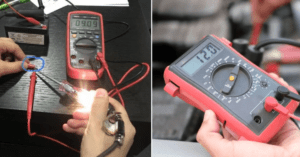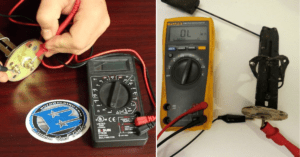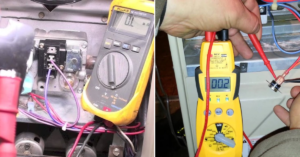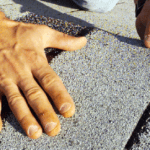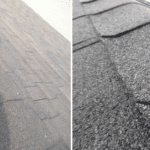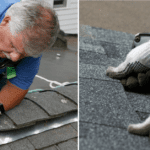How to Fill a Paintball Tank with an Air Compressor
Are you looking for an easy and cost-effective way to fill your paintball tanks? Look no further than filling them with an air compressor! Filling a paintball tank with an air compressor is simple, fast, and will save you lots of money in the long run. Whether you’re a beginner or a seasoned pro at the game of paintball, this guide will walk you through how to fill a paintball tank with an air compressor quickly and accurately. Read on to learn everything from choosing the right type of compressor to setting up your gear for optimal performance while out on the field.
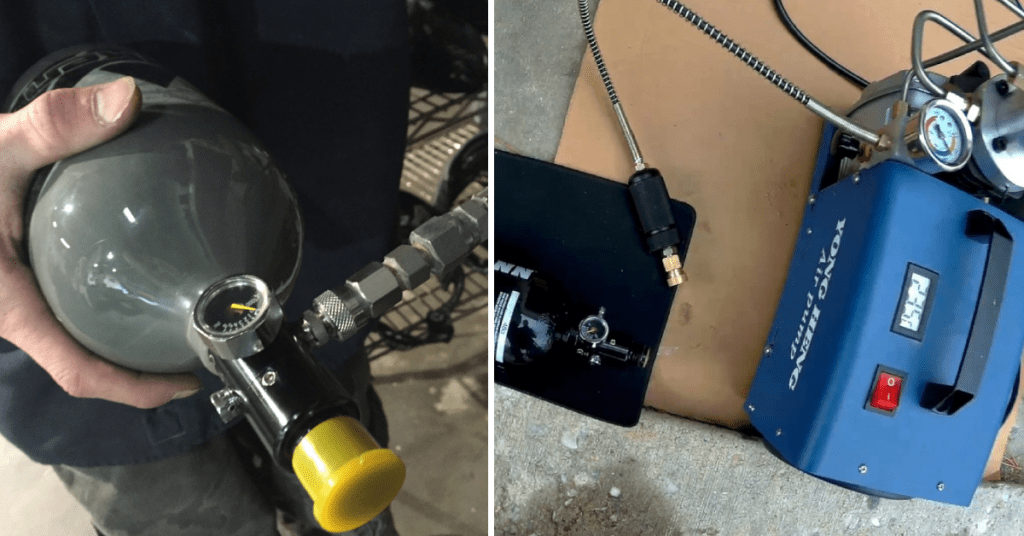
Tools and Materials Needed for Filling a Paintball Tank
To properly fill your paintball tanks with an air compressor, you will need a few essential tools and materials. These include:
- An air compressor – preferably one with a high PSI (pounds per square inch) output for faster filling times.
- A paintball tank – either CO2 or compressed air, depending on your preference.
- A fill station or adapter – this is the piece that connects your paintball tank to the air compressor.
- An air pressure gauge – is necessary for ensuring proper filling levels and preventing overfilling.
- A pair of safety goggles – it’s always important to protect your eyes while handling high-pressure tanks.
- A chronograph – this is a device that measures the speed of your paintballs and ensures they are within safe limits for play.
Safety Precautions for Filling a Paintball Tank
It’s vital to take the necessary safety precautions while filling your paintball tanks. Here are some essential tips to keep in mind:
- Read and follow all instructions carefully – make sure you understand how to properly use your air compressor, fill station, and other equipment.
- Be aware of potential hazards – always wear protective gear and stay alert for any possible leaks or bursts while handling high-pressure tanks.
- Avoid overfilling your tank – this can lead to dangerous levels of pressure inside the tank, which can be hazardous during gameplay.
- Ensure proper ventilation in the filling area – always operate your air compressor in a well-ventilated area to prevent any buildup of dangerous fumes.
- Regularly inspect all equipment for damages or wear and tear – it’s crucial to maintain your equipment in good condition for safe and efficient filling.
Checking the Paintball Tank
Inspecting the Tank’s Hydro Test Date:
Before filling your paintball tank, it’s essential to check the hydro test date. This is the date stamped on the tank that indicates when it was last tested for safety. Paintball tanks need to be hydro-tested every five years to ensure they are still safe to use. If your tank has passed its hydro test date, do not attempt to fill it or use it for gameplay. Instead, take it to a professional for testing or replacement.
Inspecting the Tank’s O-rings:
O-rings are rubber seals that help prevent air from escaping your paintball tank. It’s essential to regularly check these rings for any signs of wear and tear, such as cracks or breaks. If you notice any damages, replace them before filling your tank to prevent any air leaks.
Ensuring the Tank Is in Good Condition:
Inspect your paintball tank for any visible damages, such as dents or cracks. If you notice any significant damages, do not attempt to fill the tank and take it to a professional for inspection or replacement.
Setting Up Your Air Compressor for Filling
Before filling your paintball tank, you need to set up your air compressor for optimal performance. Here are the steps to follow:
Choosing the Right Type of Air Compressor:
When it comes to filling paintball tanks, you will need an air compressor with a high output of PSI. The recommended range is between 3000-4500 PSI, as this will allow for faster and more efficient filling times. Additionally, make sure your compressor has an adjustable pressure regulator to control the amount of air going into the tank.
Checking the Air Compressor’s Pressure:
It’s essential to ensure that your air compressor has enough pressure before filling your paintball tank. If the PSI levels are too low, it will take longer to fill the tank. On the other hand, if the PSI levels are too high, you risk overfilling and damaging your tank. Use an air pressure gauge to check the PSI levels and adjust accordingly. The recommended PSI for paintball tanks is between 800-1000.
Selecting the Appropriate Nozzle or Adapter:
Different paintball tanks require different nozzles or adapters to connect to the air compressor. Make sure you have the correct one for your tank, as using the wrong nozzle can lead to leaks and other safety hazards.
5 Easy Step-by-Step Guide to Filling a Paintball Tank with an Air Compressor
Step 1: Attaching the Tank to the Compressor
First, make sure your air compressor is turned off and disconnected from any power source before attaching the tank or any other equipment. Then, attach the fill station or adapter to the paintball tank’s valve.
Step 2: Connecting the Fill Station to the Air Compressor
Next, carefully connect the fill station or adapter to your air compressor’s nozzle or hose. Take the time to ensure that it is securely attached and properly tightened, as this will help prevent any potential air leaks that may affect the overall efficiency and performance of the system.
Step 3: Opening the Valve Slowly
Before turning on the air compressor, make sure the valve on your paintball tank is closed. Slowly open the valve while keeping an eye on the pressure gauge. This will help prevent any sudden bursts of air and allow you to fill the tank at a controlled pace.
Step 4: Filling the Tank to the Recommended Pressure
To ensure optimal performance, use the air pressure gauge to closely monitor the PSI levels in your tank and fill it accordingly. Take your time to gradually add air until you reach the specific recommended pressure for your paintball tank. Once you’ve achieved the desired pressure, don’t forget to securely close the valve on your tank to keep the pressure intact.
Step 5: Checking for Leaks
After filling the tank, it is important to ensure that the air compressor is turned off and all equipment is disconnected. Take a moment to carefully inspect the tank and valves for any signs of air leaks. Use a damp cloth to wipe down the surfaces, paying close attention to areas where leaks are more likely to occur. Look for any visible indicators such as hissing sounds, bubbles, or noticeable drops in pressure.
Testing and Rechecking the Tank
Once you’ve completed the filling process and checked for any leaks, it’s essential to perform a final check on the tank before using it in gameplay. Use an air pressure gauge to ensure that the PSI levels are within the recommended range and that there are no sudden drops or fluctuations. If everything looks good, your paintball tank is now ready for use! Remember to regularly maintain and check your equipment to ensure safe and enjoyable gameplay. So, always take the time to inspect your tank’s hydro test date, O-rings, and overall condition before filling it. Additionally, make sure to set up your air compressor correctly by choosing the right type with the appropriate pressure levels and nozzle or adapter.
Disconnecting and Storing the Paintball Tank and Air Compressor
After use, it’s important to properly disconnect and store your paintball tank and air compressor to maintain their longevity. Always turn off the air compressor and release any pressure in the system before disconnecting the tank. Store your tank in a cool, dry place with minimal exposure to sunlight or extreme temperatures. For the air compressor, make sure to follow the manufacturer’s instructions for proper storage and maintenance. By taking good care of your equipment, you’ll ensure that it functions properly and safely for many paintball adventures to come. So, always remember to follow the recommended steps and precautions when filling your paintball tank with an air compressor for a worry-free and enjoyable gameplay experience.
Tips for Storing the Paintball Tank and Air Compressor
- Always store your paintball tank in a cool, dry place to prevent any potential damage or corrosion.
- Make sure to check the hydro test date of your tank regularly and get it retested when necessary.
- Keep your air compressor clean and free from any debris or moisture that may affect its performance.
- It’s essential to always use the correct nozzle or adapter for your tank to prevent any safety hazards.
- Regularly maintain and inspect all equipment before using it to ensure safe and optimal performance. So, always take the time to properly disconnect and store your equipment after use for its longevity and efficient functioning.
Troubleshooting Common Issues for Filling a Paintball Tank with an Air Compressor
- If your tank is not filling or taking too long to fill, check the PSI levels and adjust accordingly.
- If you notice any air leaks, make sure all connections are properly secured and tightened.
- In case of any sudden pressure drops, turn off the compressor immediately and check for leaks or other potential issues.
- If your tank is not filling up to the recommended pressure, make sure you have the correct nozzle or adapter and adjust accordingly.
FAQs for Filling a Paintball Tank with an Air Compressor
Can I use any air compressor to fill my paintball tank?
No, it’s important to choose the right type of air compressor with the appropriate pressure levels and nozzle or adapter for your paintball tank.
Can you use compressed air instead of CO2?
Yes, compressed air or nitrogen is a safer and more consistent option for filling paintball tanks compared to CO2.
What’s better CO2 or compressed air for paintball?
Compressed air is a better option for paintball as it provides more consistent and reliable pressure levels, whereas CO2 can be affected by temperature changes and cause fluctuations in pressure.
Is it OK to leave CO2 in a paintball gun?
It is generally recommended to use up all the CO2 before storing your paintball gun, as leaving it for an extended period can cause damage or leaks.
Conclusion
In conclusion, now you know all there is to know about how to fill a paintball tank with an air compressor. Making sure that you have the right tools and materials for the job is essential, as is following safety precautions. Also, be sure to check your paintball tank for any wear and tear before use. Following the sequence of hooking up your air compressor, filling it with air, testing and rechecking results, disconnecting it from your paintball tank and finally storing are all things that must be done when using a paintball tank. If any issue occurs make sure you troubleshoot these common issues so you are set for game day!
Now that you’re equipped with all this knowledge go ahead and get your gear together to feel safe during a game of paintball! Whether you’re just looking to learn more or planning on taking part in your next battle soon, keep this information handy and safe travels on game day!
